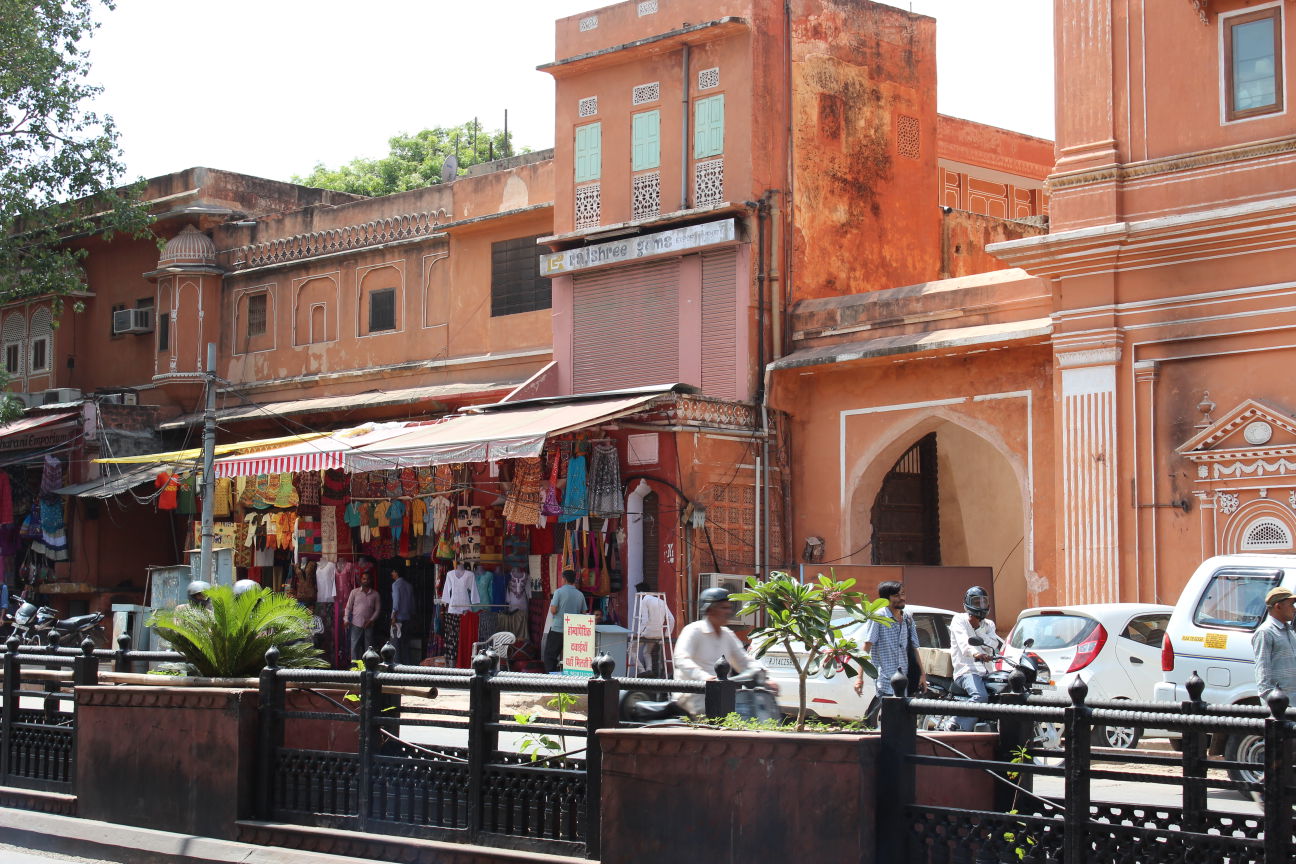
Claire Scobie hosted a magical 12-day tour combining many of India’s favourite authors and historic landmarks.
A royal welcome awaited us at Diggi Palace in Jaipur. Owner Thakur Ram Singh stood at the arched entrance greeting the first guests to the world’s largest literary event, the Jaipur Literary Festival, held in his rambling palace grounds. It marked another fairy-tale arrival on our 12-day Abercrombie & Kent special interest tour visiting Delhi, Agra and Jaipur, with Udaipur and Mumbai still to come.
I was hosting a group of 15 Australians who all shared our distinctive baked-earth sense of humour even when faced with Indian traffic jams. From the first night at the plush Imperial Hotel in Delhi, where we enjoyed Asian fusion fine-dining in the Spice Route restaurant, I knew there would be plenty of laughs ahead.
The tour itself was a fusion of the unmissable sights of northern India, starting with a bicycle rickshaw ride through the narrow lanes of Chandni Chowk in Old Delhi, and tailored literary events. The first ‘special author day’ began in Moghul Delhi, visiting Humayun’s Tomb, and ended with tea with acclaimed Indian author Rana Dasgupta, whose biography of the city, Capital, had the group riveted.
The following morning we drove to Agra and the world’s most famous monument, the Taj Mahal. En route, Suryaaveer Singh Shaktawat – or for short, Sunny – our tour guide, entertained us with stories of being a professional cricket player and the intricacies of an arranged marriage.
Abercrombie & Kent is known for its expert guides and Sunny, originally from Udaipur, was no exception. I was astounded by how seamless he made our journey. There were no hold-ups between locations; and check-in was done before we arrived at each five-star Taj or Oberoi hotel, which became progressively more luxurious the further west we travelled. I saw how easily you can become accustomed to royal treatment – and India does pomp, pageantry and ceremony better than anywhere else.
Sunny steered our group between the crowds at the Taj Mahal. For such a solid marble structure, it seemed curiously untethered. The next morning we left the opulent Oberoi Amarvilas, with its view over the pearly central dome and four minarets, and drove into Rajasthan.
Next stop was the pink city of Jaipur, famous as the world’s gemstone capital. But before shopping started in earnest, the highlight of our trip awaited us at Diggi Palace.
Since it started in 2006, the Jaipur Literary Festival has attracted a galaxy of international and Indian authors. My tour group dived right in, eager to soak up the words of Man Booker Prize-winner Margaret Atwood, who gave the opening address. Author talks were held in the 200-year-old Durbar Hall and the Rajasthani food provided for delegate guests, like ourselves, was cooked by the Diggi Palace chefs. The curries were homemade; chapattis freshly cooked; the rose petal ice cream divine.
With writers as diverse as Scottish novelist Alexander McCall Smith and economist Thomas Piketty wandering through the grounds, the atmosphere was electric.
Rajasthani dancers twirled; chai wallahs did a roaring trade.
After two days at the festival, we enjoyed sight-seeing in the city famous for its ‘Palace of the Winds’. Then Professor of English at Delhi University, Mala Lal, entertained us with stories from Rajasthan’s well-known folklorists. The setting itself, with elephants wandering by, added to the exotic experience. “That was fantastic!”, “Brilliant!” exclaimed the guests as we waved goodbye to the elephants and camels, both typical sights of Rajasthan.
Our last stop in this desert state was Udaipur, famous for Lake Pichola in the centre of the city. Ever since Roger Moore shot the James Bond film Octopussy there in 1983, it’s been on India’s tourist map. We arrived at Oberoi Udaivilas and rose petals rained down as we entered the marbled foyer.
The following day we toured the City Palace, renowned for its exquisite miniature paintings, had a brush with fame in the same textile shop where Judy Dench bought pashmina scarves when filming The Best Exotic Marigold Hotel, and took tea with Sunny’s family who live in a 400-year-old haveli (a traditional Indian mansion). It’s always a privilege to be invited into a local’s home when on holiday, especially one that has a black-and-white photo of Sunny’s late father, also a cricketer, with Don Bradman.
Udaipur proved a favourite with the group, who sat back and relaxed during the dreamy sunset cruise on the lake and enjoyed a local tour of the markets before taking the short flight to Mumbai.
From the Moghul ruins of Delhi, through Rajasthan where the medieval runs in parallel with the modern, fast-paced international Mumbai made a perfect full-stop to our journey. There was time for sight-seeing and a visit to the Dhobi Ghat, the world’s largest outdoor laundry; and lunch at Leopold Café, made famous by David Gregory Roberts’ novel, Shantaram, before our crowning author event in the Sea Lounge at the Taj Hotel where we were staying.
For our last afternoon, award-winning Indian author Kiran Nagarkar, regaled us with tales of 16th-century courtly life, Bollywood and contemporary Indian politics.
Out of the window, India Gate reared up as the sun sunk into the Arabian Sea, and all around me, the group sat captivated. That night, after our farewell dinner, we were all reluctant to say goodbye – a sign of a memorable holiday, or as one participant Sarah Hender told me later, “a trip of a lifetime.”
It’s no wonder I’ve already put up my hand to host Abercrombie & Kent’s literary tour through India next year. From Salman Rushdie to Shantaram, India’s unforgettable characters and vast historical canvas beckon me back. I just wonder who will join me on the next unfolding story.
Latest Articles
Don't miss the latest from Luxury Travel
